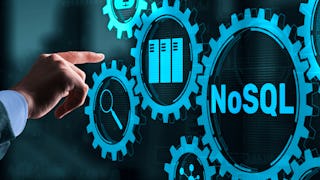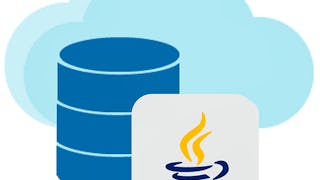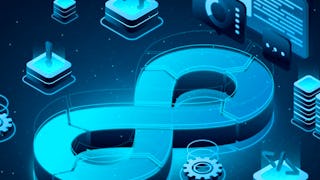Have you ever wondered what happens to the registration details after you click on the submit button or to the order details once you press the confirm order button when you try to access any website? From where do you think, the details of the product catalogue are fetched to be displayed on the browser?

Enjoy unlimited growth with a year of Coursera Plus for $199 (regularly $399). Save now.

Implement Polyglot Persistence Using SQL and NoSQL Databases
This course is part of RESTful Microservices Using Node.js and Express Specialization

Instructor: NIIT
Included with
What you'll learn
Implement Polyglot Persistence using MySQL and Mongo Database
Skills you'll gain
Details to know

Add to your LinkedIn profile
2 assignments
See how employees at top companies are mastering in-demand skills

Build your subject-matter expertise
- Learn new concepts from industry experts
- Gain a foundational understanding of a subject or tool
- Develop job-relevant skills with hands-on projects
- Earn a shareable career certificate

There are 2 modules in this course
Over the last 3 decades, RDBMS has been a stable database for large global corporations and small business. Most employers mandate SQL skills as a necessary check in their recruitment process. As a software engineer, you will be required and be able to work with MySQL database to create, store, query and analyze data from RDBMS. In this learning sprint, you will learn how to model data using the ER diagram. You will implement MySQL shell commands to perform CRUD operations. The hands-on exercises, in this learning sprint will also enable you to build RESTful APIs using Node.js and MySQL database.
What's included
17 videos2 readings1 assignment2 programming assignments
For a customer facing system of engagement, it is crucial to have a database that can handle unstructured and unpredictable data. NoSQL document database like MongoDB fulfills this criteria. As a back-end programmer, you will be required to resolve the mismatch between the storage and application systems and accordingly model data to make processing efficient. In this learning sprint, you will identify steps to model data for MongoDB database. You will learn to setup MongoDB in local machines and perform CRUD operations using the shell commands. In addition, the hands-on exercises will help you gain experience with various techniques used to integrate MongoDB with Node.js RESTful APIs.
What's included
22 videos1 reading1 assignment2 programming assignments
Earn a career certificate
Add this credential to your LinkedIn profile, resume, or CV. Share it on social media and in your performance review.
Explore more from Software Development
 Status: Free Trial
Status: Free TrialBoard Infinity
 Status: Free Trial
Status: Free Trial Status: Free Trial
Status: Free TrialLearnQuest
 Status: Free Trial
Status: Free Trial
Why people choose Coursera for their career





Open new doors with Coursera Plus
Unlimited access to 10,000+ world-class courses, hands-on projects, and job-ready certificate programs - all included in your subscription
Advance your career with an online degree
Earn a degree from world-class universities - 100% online
Join over 3,400 global companies that choose Coursera for Business
Upskill your employees to excel in the digital economy
Frequently asked questions
To access the course materials, assignments and to earn a Certificate, you will need to purchase the Certificate experience when you enroll in a course. You can try a Free Trial instead, or apply for Financial Aid. The course may offer 'Full Course, No Certificate' instead. This option lets you see all course materials, submit required assessments, and get a final grade. This also means that you will not be able to purchase a Certificate experience.
When you enroll in the course, you get access to all of the courses in the Specialization, and you earn a certificate when you complete the work. Your electronic Certificate will be added to your Accomplishments page - from there, you can print your Certificate or add it to your LinkedIn profile.
Yes. In select learning programs, you can apply for financial aid or a scholarship if you can’t afford the enrollment fee. If fin aid or scholarship is available for your learning program selection, you’ll find a link to apply on the description page.
More questions
Financial aid available,

